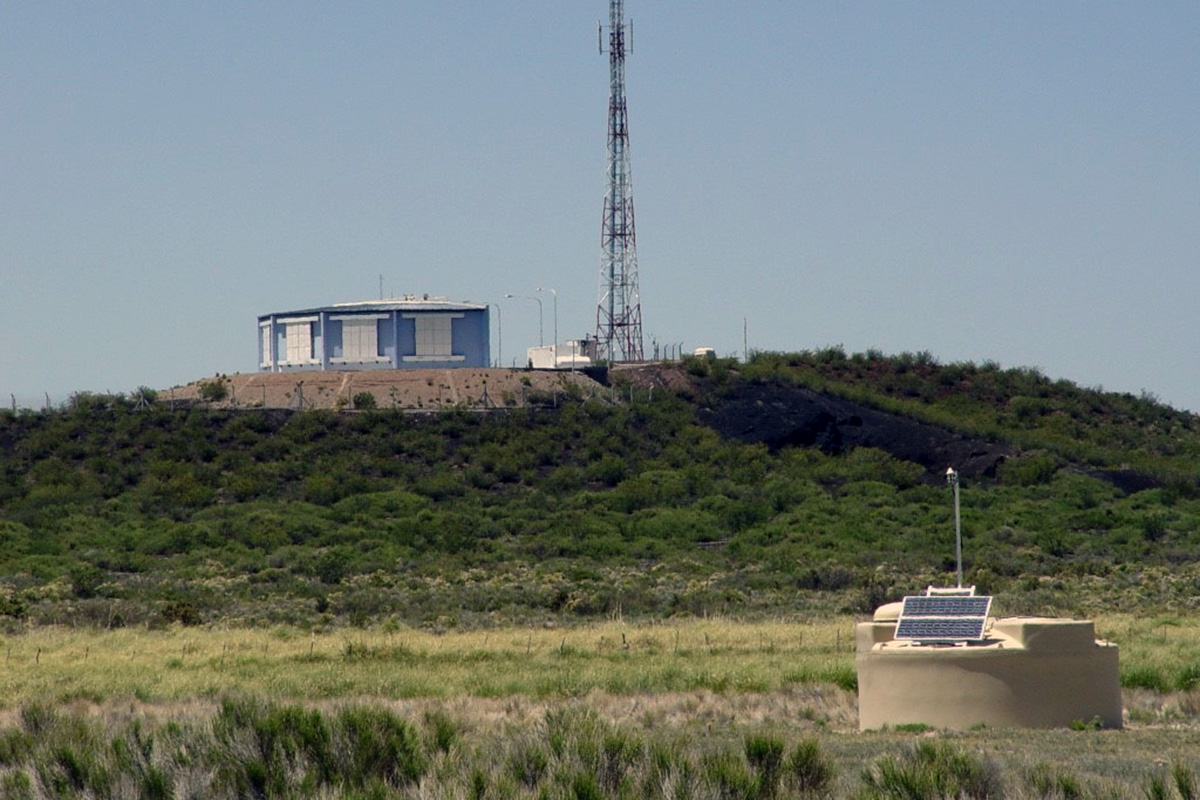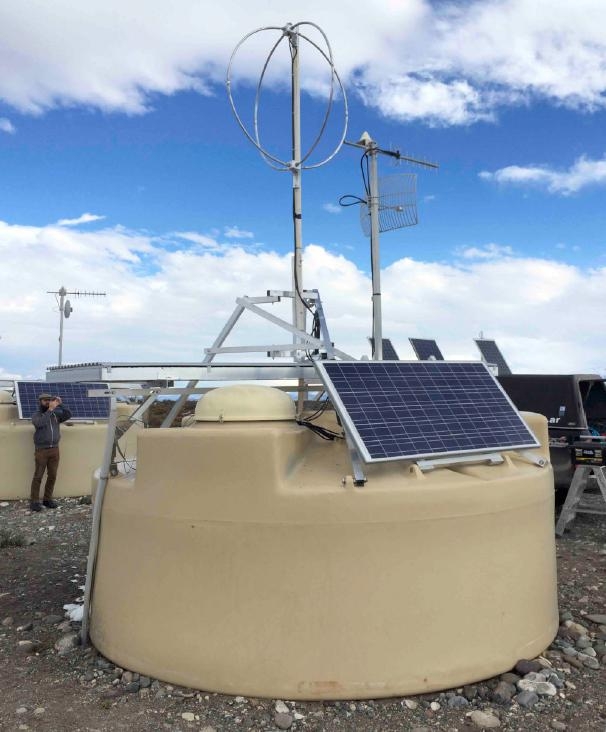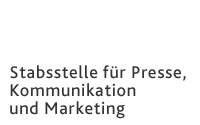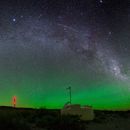Executive Department for
Press, Communication and Marketing
Adolf-Reichwein-Straße 2a Gebäude AVZ (Gebäudeteil AR-NA) 57068 Siegen
Phone: +49 (0)271/740-4915 Fax.: +49 (0)271/740-4911 E-Mail: presse@uni-siegen.de
Siegen Physicists Research Cosmic Rays
Researchers at the University of Siegen have received 500,000 euros from the Federal Ministry of Education and Research (BMBF) for their research at the Pierre Auger Observatory in Argentina. This will allow them to continue their work there through at least 2026.
 Scientists from around the world come to the Pierre Auger Observatory in Argentina to research cosmic rays as they strike the earth’s atmosphere from space. These are high-energy particles whose nature and origin remain unknown. For the past twenty years, researchers from the University of Siegen have been part of the effort in this world’s largest experiment toward measuring cosmic rays. In connection with four other German universities, they are working on both the physical interpretation of the measurement results as well as how to improve the measurements themselves. To aid in this effort, the Federal Ministry of Education and Research (BMBF) is providing the University of Siegen with nearly an additional 600,000 euros in funding to keep the research running until 2026.
Scientists from around the world come to the Pierre Auger Observatory in Argentina to research cosmic rays as they strike the earth’s atmosphere from space. These are high-energy particles whose nature and origin remain unknown. For the past twenty years, researchers from the University of Siegen have been part of the effort in this world’s largest experiment toward measuring cosmic rays. In connection with four other German universities, they are working on both the physical interpretation of the measurement results as well as how to improve the measurements themselves. To aid in this effort, the Federal Ministry of Education and Research (BMBF) is providing the University of Siegen with nearly an additional 600,000 euros in funding to keep the research running until 2026.
“We’re thrilled about this funding, which also serves as an affirmation of what we’ve achieved so far in our research at the Pierre Auger Observatory,” says Project Director Prof. Markus Cristinziani from the Department of Physics at the University of Siegen. Together with his colleagues Prof. Markus Risse and Dr. Marcus Niechciol, he is working at the observatory in the Argentinian pampas. Over 1,600 water tanks, each outfitted with detectors, have been installed across a space almost three times as large as the Siegen-Wittgenstein district. While these are unable to measure the cosmic rays directly, they can however measure the so-called ‘air showers.’ These are formed from the smallest of particles that arrive at ground level, creating brief flashes of light in the water tanks which the detectors can record.
As a new funding period dawns, the University of Siegen has opted to take part in an upgrade of the measurement technology. Each detector has already been outfitted with radio antenna to measure not only the light flashes, but also radio signals in the water that occur during the air showers. “Over the next three years, we’d like to further upgrade the electronics for reading out and calibrating the antenna, which will allow us to acquire even more precise measurement results,” Prof. Cristinziani explains. The necessary technology will first be developed in the laboratory in Siegen and then be tested on site in Argentina.
 As part of a second hardware project, the physicist from Siegen will also work on training the electronic and data recording system to measure terrestrial gamma flashes as well. These are sudden flashes produced by ultra-high energy gamma rays. The researchers hope among other goals to determine whether there are links between gamma flashes and electrical storms. To review this, however, the measurements must be conducted over a longer period of time than is possible with the current levels of technology.
As part of a second hardware project, the physicist from Siegen will also work on training the electronic and data recording system to measure terrestrial gamma flashes as well. These are sudden flashes produced by ultra-high energy gamma rays. The researchers hope among other goals to determine whether there are links between gamma flashes and electrical storms. To review this, however, the measurements must be conducted over a longer period of time than is possible with the current levels of technology.
Alongside technical upgrades, the Siegen researchers are also involved in the physical analysis of measurement data. Their special expertise in this area lies in the search for tiny light particles, known as ultra-high energy photons, and a field in which Siegen is a global leader. “It’s been physically proven at this point that these kinds of photons play a role in cosmic processes. In practice, however, no one has succeeded to date at actually measuring this kind of photon at its highest energy levels,” explains Dr. Marcus Niechciol. He and his colleagues thus hope to intensify the search for photons: To this end, an analytical program is planned to record events where photons could appear — and then automatically assess the corresponding measurement data.
As a secondary line of analysis, a targeted search for point sources for photos will be conducted, meaning tiny points in the sky that indicate the origin of a photon. A technical upgrade is planned that will allow the researchers to expand the point source search to 24 hours a day. Until now this has only been possible at night. “If nature is kind to us, we might well be able to find an ultra-high energy photon in the foreseeable future,” Niechciol hopes. “That would be a massive success and an important piece of the puzzle to someday solving the puzzle of cosmic rays.”
Background:
The University of Siegen has been researching at the Pierre Auger Observatory since 2004. The researchers work there in association with colleagues from the University of Wuppertal, RWTH Aachen, the Karlsruhe Institute for Technology, and the University of Hamburg. Roughly 400 researchers from 18 different nations are active at the Pierre Auger Observatory.
Contact:
Prof. Dr. Markus Cristinziani (Project Director)
Tel.: +49 0271 740 3629
Email: Markus.Cristinziani@uni-siegen.de
Dr. Marcus Niechciol
Tel.: +49 0271 740 3717
Email: niechciol@physik.uni-siegen.de


